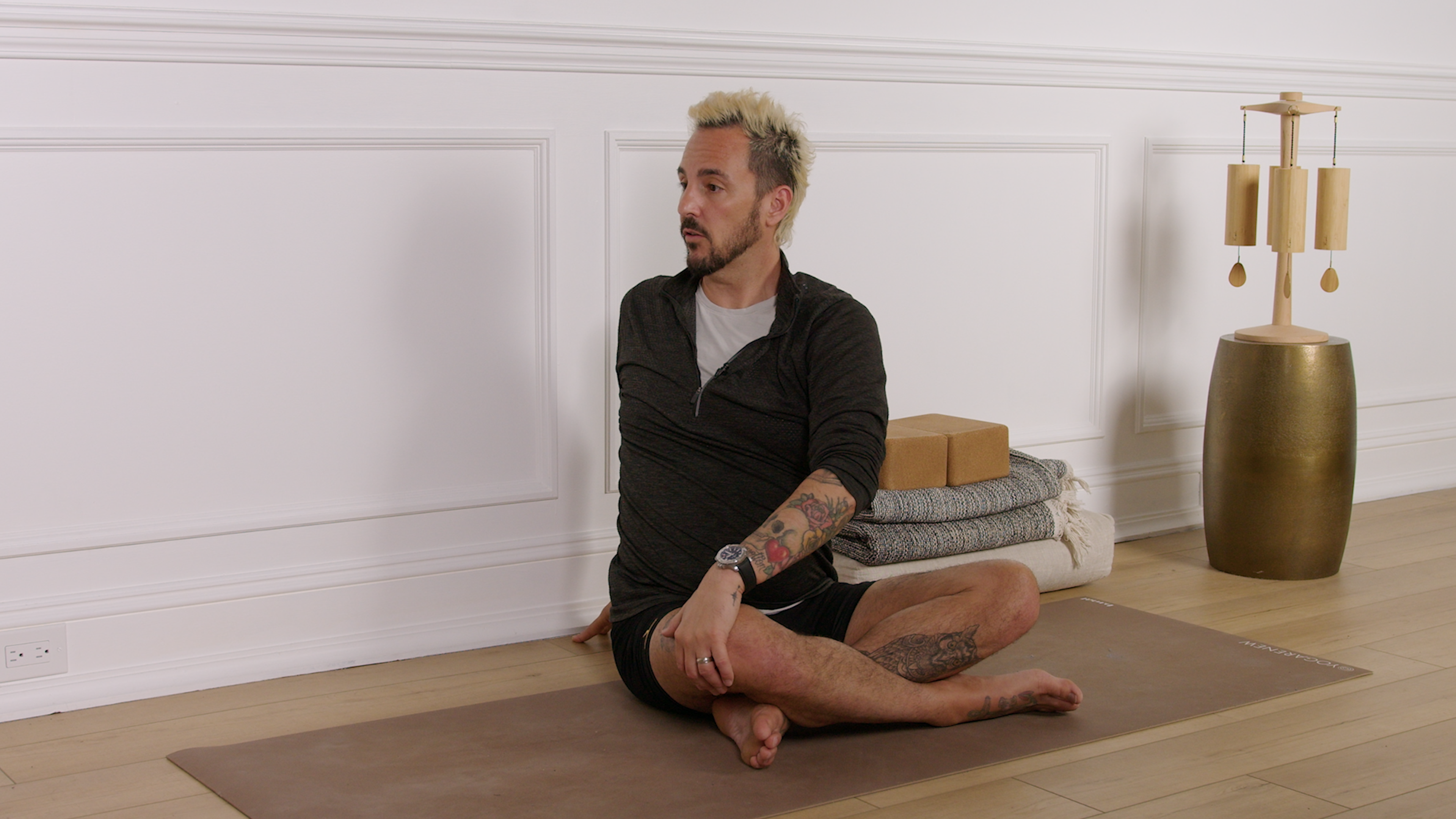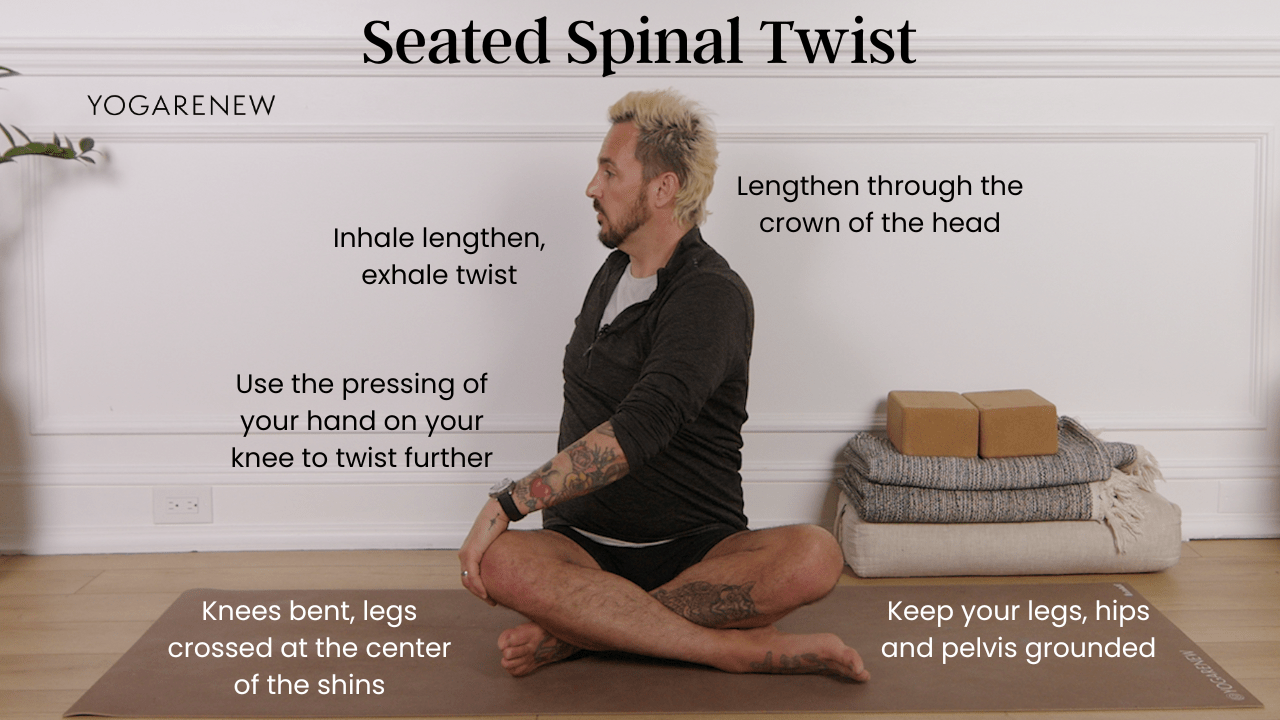What is Seated Spinal Twist?
English Name: Seated Spinal Twist
Sanskrit Name: Ardha Matsyendrasana (pronounced ARE-dah MAHTS-yen-DRAHS-uh-nuh)
Category: Seated Pose, Twist, Detoxifying, Intermediate

English Name: Seated Spinal Twist
Sanskrit Name: Ardha Matsyendrasana (pronounced ARE-dah MAHTS-yen-DRAHS-uh-nuh)
Category: Seated Pose, Twist, Detoxifying, Intermediate
Seated Spinal Twist, or Ardha Matsyendrasana, is a classic twisting posture that energizes the spine, tones the abdominal organs, and improves posture. Named after the yogic sage Matsyendra, this pose offers a powerful way to explore spinal rotation, breath expansion, and internal cleansing.
The pose encourages a balance of strength and flexibility while gently massaging the digestive system. With its upright, grounded position and spiraling motion, Seated Spinal Twist builds awareness of posture, core control, and breath-directed movement. It is widely practiced across styles—from traditional Hatha to modern Vinyasa.


Seated Spinal Twist offers a blend of physical vitality and mental clarity. It nurtures the spine, stimulates internal organs, and promotes a calm, introspective energy. As both a detoxifying and balancing pose, it invites you to return to your center—physically, emotionally, and energetically. With regular practice, it can deepen breath awareness, improve posture, and support a healthy spine.
Yes—keep the bottom leg straight or sit on a folded blanket for more comfort.
Try a gentler version and focus on lengthening before twisting. Avoid forcing the movement.
Yes—gentle abdominal compression can help stimulate the digestive system.
Your New Favorite Yoga App. For Free.